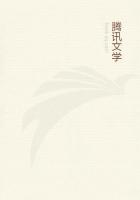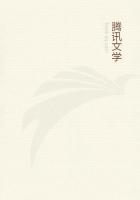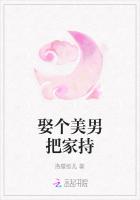(3.ii.18) But if the first commodities, and of course the first capital, were the result of' purelabour, the value of this capital, the quantity of other commodities for which it would exchange,must have been estimated by labour. This is an immediate consequence of the proposition whichwe have just established, that where labour was the sole instrument of production, exchangeablevalue was determined by the quantity of labour which the production of the commodity required.
(3.ii.19) If this be established, it is a necessary consequence, that the exchangeable value ofall commodities is determined by quantity of labour.
(3.ii.20) The first capital, as has just been seen, being the result of pure labour, bears a valuein proportion to that labour. This capital concurs in production. And it is contended that as soon ascapital concurs in production, the value of the commodity produced is determined by the valueof the capital. But the value of that capital itself, we have just observed, is determined by labour.
To say, therefore, that the value of a product is determined by the value of the capital, is of nouse, when you have to go beyond the value of the capital, and ask, what it is by which that valueis itself determined. To say that the value of the product is determined by the value of thecapital, but the value of the capital is determined by the quantity of labour, is to say that thevalue of the product is determined by the quantity of labour.
(3.ii.21) It thus undeniably appears, that not only the value of the first capital, but, by equalnecessity, that of the commodities which are produced by the first capital, is determined byquantity of labour. Capital of the second stage must consist in the commodities which areproduced by that of the first stage. It must, therefore, be estimated by the quantity of labour. Thesame reasoning applies to it in every subsequent stage. The value of the first capital wasregulated by quantity of labour: the value of that which was produced by the first capital wasregulated by the value of the first: that, however, was valued by labour: the last, therefore, isvalued by labour; and so on, without end, as often as successive productions may be supposed tobe made. But, if the value of all capital must be determined by labour, it follows, upon allsuppositions, that the value of all commodities must be determined by labour.
(3.ii.22) To say, indeed, that the value of commodities depends upon capital, implies one ofthe most obvious of all absurdities. Capital is commodities. If the value of commodities, then,depends upon the value of capital, it depends upon the value of commodities; value in shortdepends upon value. This is not an exposition of value. It is an attempt clearly and completelyabortive.
(3.ii.23) It thus appears, that quantity of labour, in the last resort, determines the proportionin which commodities exchange for one another.
(3.ii.24) There is one phenomenon which is brought to controvert these conclusions, andwhich it is, therefore, necessary to explain.
(3.ii.25) It is said that the exchangeable value of commodities is affected by time, withoutthe intervention of labour; because, when profits of stock must be included, so much must be addedfor every portion of time which the production of one commodity requires beyond that ofanother. For example, if the same quantity of labour has produced in the same season a cask ofwine, and 20 sacks of flour, they will exchange against one another at the end of the season: butif the owner of the wine places the wine in his cellar, and keeps it for a couple of years, it will beworth more than the 20 sacks of flour, because the profits of stock for the two years must beadded to the original price. Here is an addition of value, but here it is affirmed, there has been nonew application of labour; quantity of labour, therefore, is not the principle by whichexchangeable value is regulated.
(3.ii.26) This objection is founded upon a misapprehension with respect to the nature ofprofits.
Profits are, in reality, the measure of quantity of labour; and the only measure of quantity oflabour to which, in the case of capital, we can resort. This can be established by rigid analysis.
(3.ii.27) If two commodities are produced, a bale of silk, for example, for immediateconsumption, and a machine, which is an article of fixed capital; it is certain, that if the bale ofsilk and the machine were produced by the same quantity of labour, and in the same time, theywould exactly exchange for one another: quantity of labour would clearly be the regulator oftheir value.
(3.ii.28) But suppose that the owner of the machine, instead of selling it, is disposed to useit, for the sake of the profits which it brings; what is the real character and nature of his action? Insteadof receiving the price of his machine all at once, he takes a deferred payment, so much perannum: he receives, in fact, an annuity, in lieu of the capital sum; an annuity, fixed by thecompetition of the market, and which is therefore an exact equivalent for the capital sum.
Whatever the proportion which the capital sum bears to the annuity, whether it be ten years' purchase, or twenty years' purchase, such a proportion is each year's annuity of the original valueof the machine. The conclusion, therefore, is incontrovertible: as the exchangeable value of themachine, had it been sold as soon as made, would have been the practical measure of thequantity of labour employed in ****** it, one-tenth or one-twentieth of that value measures alsoa tenth or a twentieth of the quantity of labour.
(3.ii.29) If a piece of machinery, which has cost 100 days' labour, is applied in ****** acommodity, and is worn out in the ****** of it; and if 100 days' pure labour are employed in****** another commodity; the produce of the machine, and the produce of the labour,supposing no adjustment necessary for difference of time, will exchange against one another.














